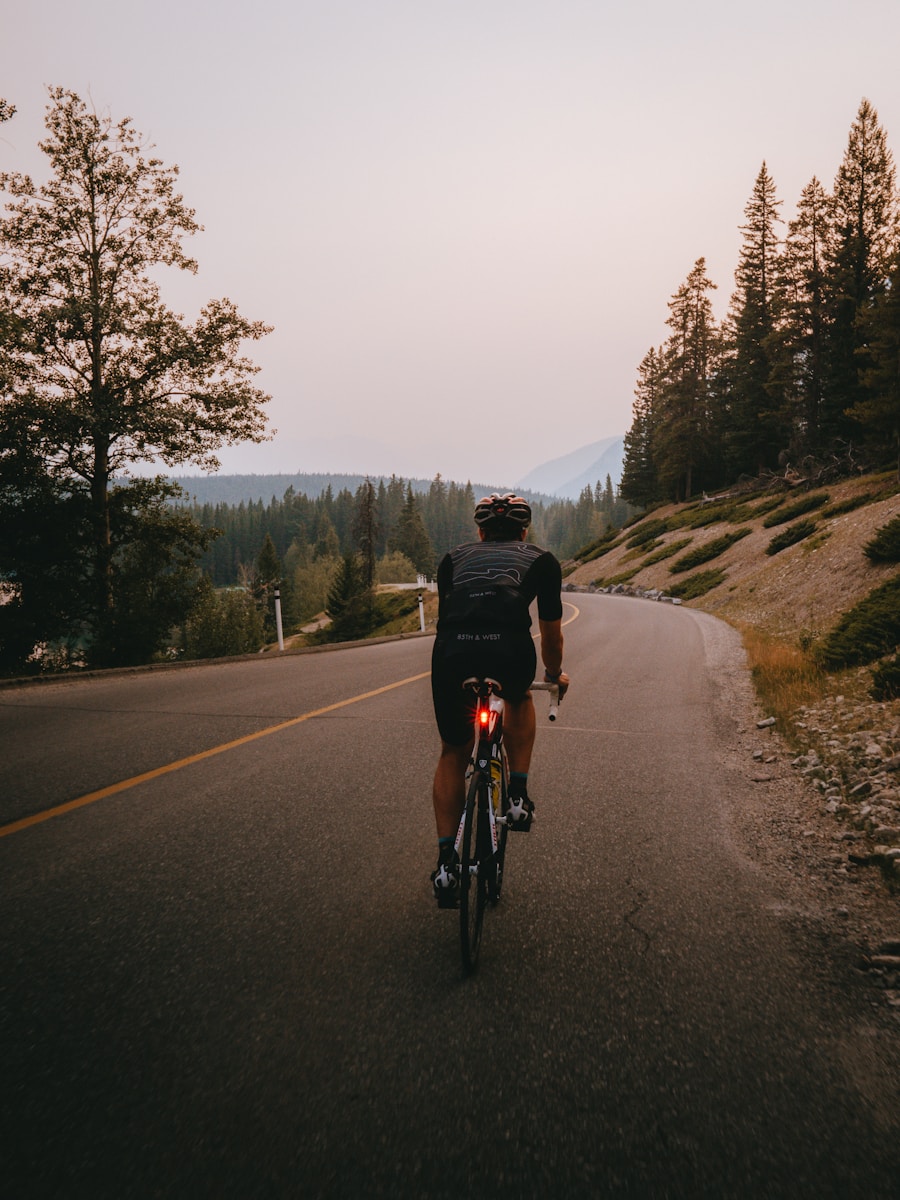🚴♂️ The Cycling Dilemma Every Rider Over 40 Faces
You’ve crossed that invisible threshold—somewhere after 40, your legs still have power, but the scale isn’t cooperating. The question that haunts every weekend warrior: Can I shed those stubborn kilos without sacrificing the watts that make me competitive?
The modern amateur cyclist faces a deceptively simple challenge that becomes more complex with each passing year. The answer isn’t found in miracle supplements or extreme diets, but in understanding two fundamental truths: consistent recovery is the cornerstone of sustainable performance, and intelligent protein strategy is your fastest route there.
💡 The Age Factor
After 35, your muscles develop “anabolic resistance”—a reduced ability to convert dietary protein into new muscle tissue. Masters cyclists now require 1.4-2.0g of protein per kg of body weight daily—nearly double the sedentary recommendation—to maintain lean mass while logging thousands of training kilometers.
🏆 Recovery Beats Stimulus—Every Single Time
Cycling culture worships the grind—brutal hill repeats, Strava segment hunting, those legendary group ride attacks. Apps even reward Local Legend status for repeat performances. But here’s the truth that separates champions from casualties: unless those efforts are matched with disciplined recovery, you’re spiraling into fatigue and muscle loss.
“Exercise is controlled damage. Adaptation happens only when that damage is repaired with superior materials. Protein provides those materials.”
🎯 The Numbers Game: How Much Protein You Actually Need
🥇 For a 70kg Cyclist
Daily protein target, adjusting higher during calorie-restricted weight loss phases
🍽️ Per Meal Target
Optimal protein per feeding to maximize muscle protein synthesis
🥛 Quality Matters: Your Protein Arsenal
WWhey Protein
The gold standard. Peaks blood amino acids in 20-40 minutes—perfect for post-workout recovery or morning fuel when appetite is low.
🥚Whole Food Champions
Eggs: Nature’s perfect amino acid profile
Greek Yogurt: 10g protein per 100g plus gut-friendly probiotics
Salmon & Fish: Protein plus inflammation-fighting omega-3s
Nuts & Seeds: 5-8g protein per 30g serving with healthy fats
⏰ Timing is Everything: The Post-Ride Protocol
🚫 The Driveway Protein Shake Mistake
Immediately after intense efforts, your body remains in “fight-or-flight” mode—blood is shunted away from your gut, and digestion stalls. Wait 30-120 minutes for your nervous system to shift into “rest-and-digest” mode before your main protein meal for optimal absorption.
📋 A Real-World Daily Menu: 140g Protein Made Simple
| Meal | Time | Food | Protein |
|---|---|---|---|
| Breakfast | 07:30 | 200g Greek yogurt + 30g whey + berries + chia | 35g |
| Mid-Morning | 10:30 | Two boiled eggs + rye toast | 20g |
| Lunch | 13:30 | 150g grilled salmon + quinoa + vegetables | 35g |
| Snack | 16:30 | 40g mixed nuts + banana | 8g |
| Dinner | 19:00 | 120g firm tofu stir-fry + brown rice | 30g |
| Pre-Bed | 21:30 | 250ml casein shake with cocoa | 18g |
⚖️ Weight Loss Without Power Loss: The Strategy
🔥 Create a Smart Caloric Deficit
Trim 300-500 calories daily. Replace processed carbs with fibrous vegetables and unsweetened dairy. Your body will burn fat while higher protein intake protects precious fast-twitch muscle fibers.
💧 Hydration + Sleep = Recovery Magic
Two liters of water daily plus 7+ hours of quality sleep. Growth hormone and testosterone—your muscle-building allies—are released during deep sleep cycles.
💊 Smart Supplementation
Whey Isolate
Post-ride convenience and rapid absorption
Creatine
3-5g daily for sprint power and lean mass
Skip BCAAs
Redundant if protein targets are met
🎯 The Behavioral Framework: Protein-First Planning
🧠 Mental Shift: Plan Protein First
Instead of scrambling for calories post-ride, identify your 4-6 daily protein “anchors” first. Build carbs and fats around them based on training load. This approach eliminates decision fatigue and ensures consistent recovery nutrition.
🏁 The Bottom Line
Cycling’s twin grails—low body mass and high power—aren’t mutually exclusive. They require a recovery-first mindset supported by strategic protein intake. 1.5-2g per kg daily, spread across 4-6 meals, built around high-quality sources gives masters cyclists the foundation to lose fat while preserving the muscle that generates watts.
Remember: digital kudos and Local Legend trophies mean nothing without the invisible badge of robust physiology. Give recovery the same respect you give the climb. That’s how you’re still sprinting for town signs at sixty-five—and winning.
Ready to Transform Your Cycling Nutrition?
Start with tomorrow’s breakfast. Plan your protein anchors, stock your fridge with quality sources, and prioritize recovery as much as you do those Strava segments.
Your power-to-weight ratio will thank you. 🚴♂️💪




Brilliant article! I’m 47 and struggling with exactly this issue. Been tracking my protein for the past month after reading similar advice elsewhere, but this meal plan is so much more practical than what I was trying to do. Question: I usually ride at 6 AM before work – should I have that whey shake before the ride or wait until after? My commute means I can’t really wait 2 hours to eat properly.
Great question Mike! For early morning riders like yourself, I’d recommend having a small whey shake (15-20g) about 30 minutes before your ride for fuel, then your main protein-rich breakfast when you get to work. This gives you the best of both worlds – some amino acids for muscle protection during the ride, plus your major protein meal when digestion is optimal. The pre-ride shake won’t interfere with performance and ensures you’re not training in a completely fasted state. Hope this helps! 🚴♂️
This is exactly what I needed to read! I’m 42, been cycling for 3 years now and really wanting to get competitive in my age group. But I’m vegetarian and struggling to hit these protein numbers without feeling bloated all the time. The tofu stir-fry idea is great, but any other plant-based suggestions? Also wondering about timing – I prefer evening rides (kids, work schedule etc). Does the post-ride timing advice still apply?
Jenny, great questions! For plant-based protein without bloating: try lentil pasta (20g protein per 100g), hemp seeds (5g per tablespoon), and pea protein powder blended into smoothies. Tempeh is also fantastic – easier to digest than tofu for many people.
For evening rides, yes absolutely the timing still applies! Have a light dinner before your ride, then wait 30-60 minutes post-ride before your main recovery meal. Evening riders actually have an advantage – you can have that casein shake before bed as mentioned in the article. Perfect timing for overnight muscle repair! 🌙
Interesting read, though I’m always skeptical of nutrition advice that seems too simple. Been doing zone 2 base building and watching my power numbers religiously. Currently eating around 0.8g/kg protein (so about 60g daily at 75kg) and haven’t seen any muscle loss according to my DEXA scans. What’s the actual research showing that going from 60g to 150g will make a measurable difference in power output? Are we talking 1% gains or 10%? Need to see if this is worth the dietary hassle and cost.
Dave, excellent skepticism! You’re right to ask for specifics. The research shows it’s not about immediate power gains, but rather maintaining muscle mass during caloric deficits. At 0.8g/kg you’re fine for maintenance, but if you want to lose weight while preserving power, the higher intake becomes crucial.
Studies by Moore et al. (2012) and Helms et al. (2014) show that athletes in energy deficits lose 3-5% more lean mass on lower protein vs. 1.6-2.2g/kg intake. For a 75kg cyclist, that could mean preserving an extra 1-2kg of muscle during weight loss. Power-wise, that translates to roughly 2-4% better power output at lighter body weight. Not huge, but meaningful in competitive cycling! 📈
This is overwhelming but helpful! I’m 35, just got into cycling this year after being pretty sedentary. Currently doing 3 rides per week (about 30-40km each). I’m about 15kg overweight and definitely want to lose it, but also want to get stronger on the bike.
Should I be following this same protein approach as someone just starting out? Or is this more for experienced riders? Also, any tips on affordable protein sources? The meal plan looks expensive compared to my current pasta-and-sandwich diet! Thanks for any advice.
Tom, perfect time to start! At 35 with 15kg to lose, this approach is actually MORE important for you than experienced riders. You’re building new habits and muscle simultaneously.
Budget protein heroes: canned tuna ($2/can = 25g protein), dried lentils (dirt cheap, 18g per cup), eggs ($3/dozen = 72g protein), and basic whey powder. Even peanut butter on your current sandwiches adds 8g protein per 2 tbsp!
Start with 1.5g/kg daily and focus on getting protein at each meal. Don’t change everything at once – just upgrade your current foods. Instead of plain pasta, try adding some canned beans. Your cycling performance will improve as you lose weight! 🚀